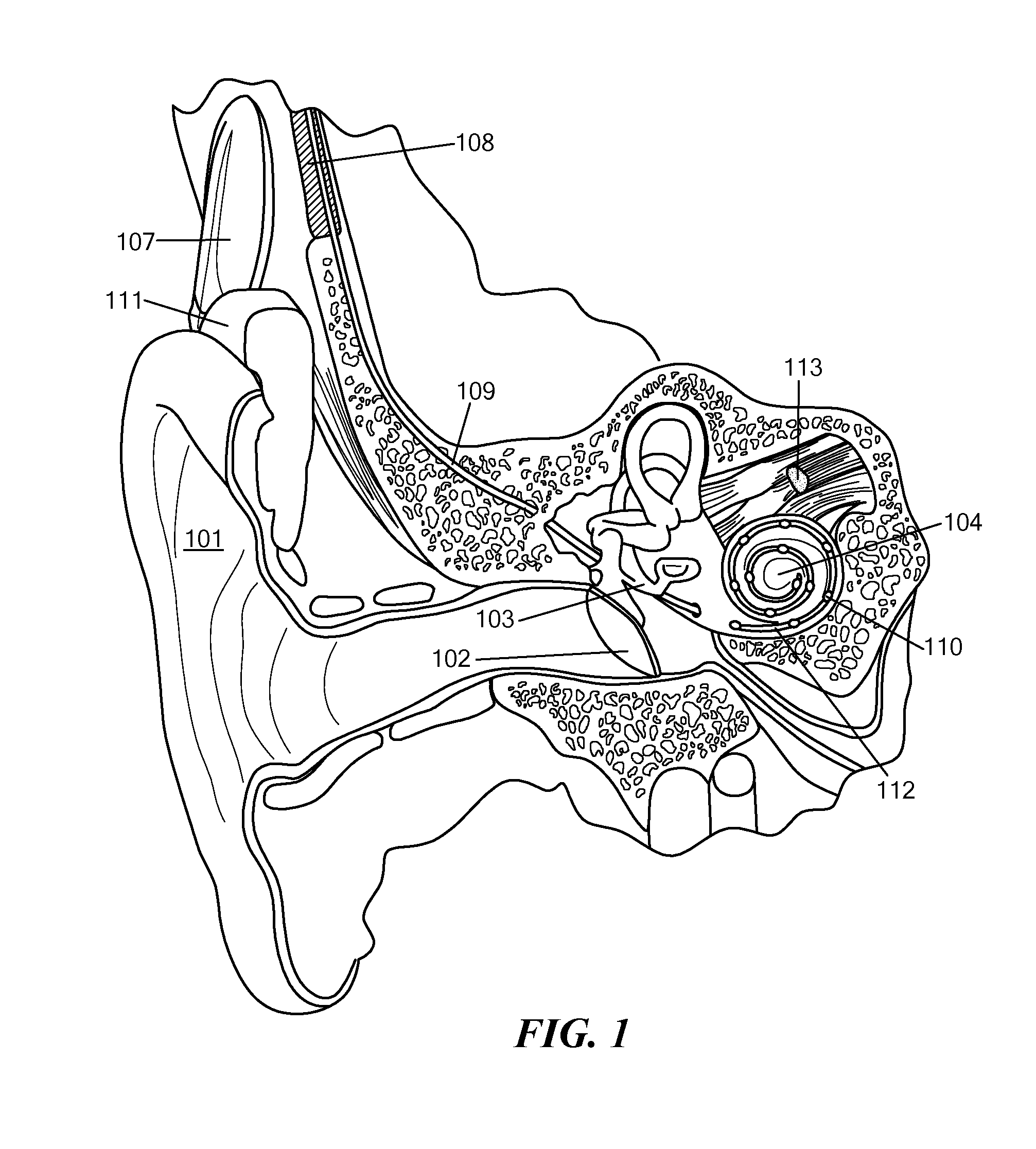Enhancing Fine Time Structure Transmission for Hearing Implant System
a technology of fine time structure and transmission method, which is applied in the field of acoustic signal processing for hearing implants, can solve the problems of amplitude modulation, partially masking the fine time structure information, and still challenging the perception of music and prosodic speech cues, etc., and achieves the effect of reducing modulations
- Summary
- Abstract
- Description
- Claims
- Application Information
AI Technical Summary
Benefits of technology
Problems solved by technology
Method used
Image
Examples
Embodiment Construction
[0013]In accordance with a first embodiment of the invention there is provided a method of signal processing for a hearing implant. The hearing implant includes at least one electrode, each electrode associated with a channel specific sampling sequence. The method includes processing an acoustic audio signal to generate for each electrode a band pass signal representing an associated band of audio frequency. For each electrode, a sequence signal is determined as a function of the electrode's associated band pass signal and channel specific sampling sequence. An envelope of each band pass signal is determined. The envelope of each band pass signal is filtered to reduce modulations resulting from unresolved harmonics, creating for each electrode an associated filtered envelope signal. Each electrode's sequence signal is weighted based, at least in part, on the electrode's associated filtered envelope signal.
[0014]In accordance with related embodiments of the invention, filtering the e...
PUM
 Login to View More
Login to View More Abstract
Description
Claims
Application Information
 Login to View More
Login to View More - R&D
- Intellectual Property
- Life Sciences
- Materials
- Tech Scout
- Unparalleled Data Quality
- Higher Quality Content
- 60% Fewer Hallucinations
Browse by: Latest US Patents, China's latest patents, Technical Efficacy Thesaurus, Application Domain, Technology Topic, Popular Technical Reports.
© 2025 PatSnap. All rights reserved.Legal|Privacy policy|Modern Slavery Act Transparency Statement|Sitemap|About US| Contact US: help@patsnap.com



